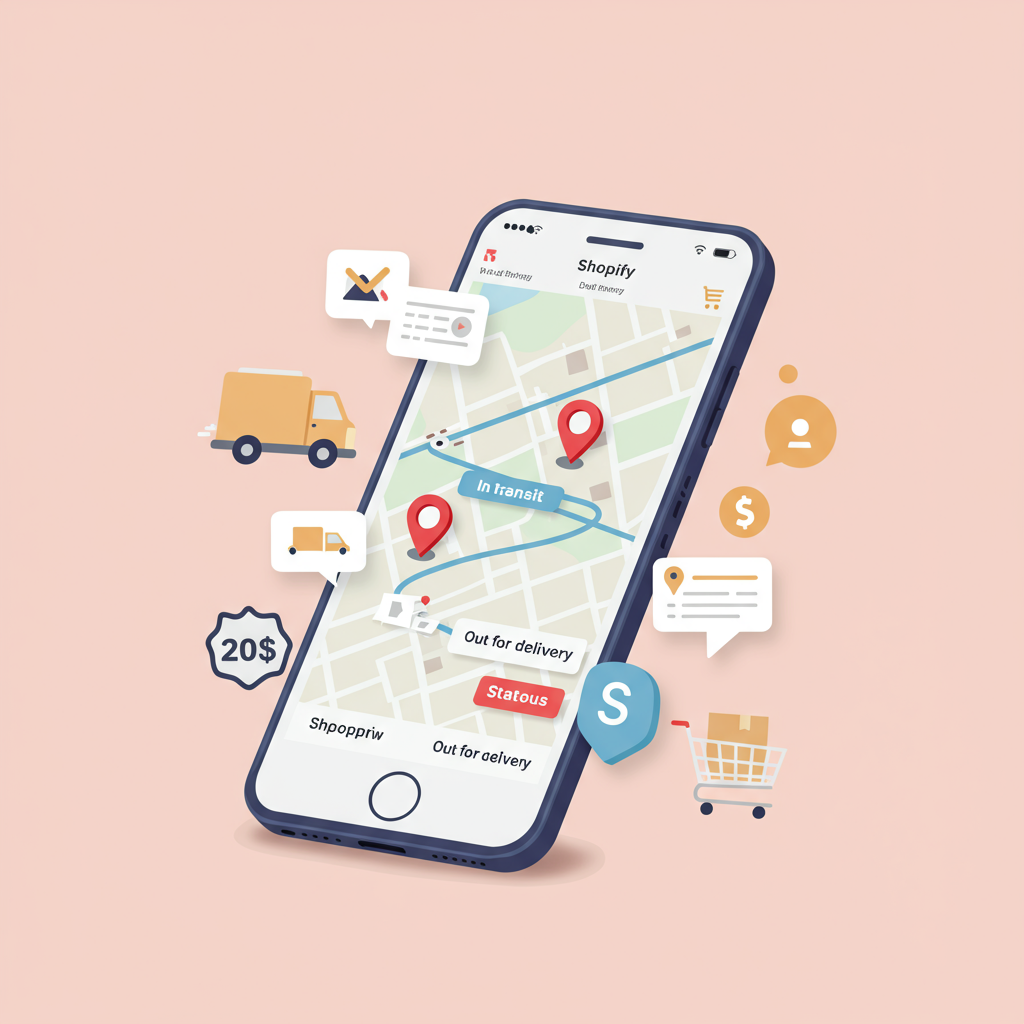Elevate your customer experience and streamline operations with seamless order tracking integration for your Shopify store.
As a Shopify merchant, I know firsthand the excitement of a new order. But that excitement quickly shifts to the crucial task of ensuring the product reaches my customer smoothly and transparently.
This is where order tracking comes into play, and frankly, it’s more than just a convenience; it’s a cornerstone of modern e-commerce customer service.
Today, I want to walk you through the ins and outs of order tracking integration for your Shopify store, explaining why it’s so vital and how you can implement it effectively.
Think about it from your customer’s perspective. Once they’ve clicked “purchase,” their next thought is often, “Where’s my order?”
Providing easy, real-time access to this information significantly reduces customer anxiety and builds trust. It transforms a potentially stressful waiting period into a transparent and reassuring experience.
For us merchants, the benefits are equally compelling. Robust order tracking can drastically cut down on “Where is my order?” (WISMO) inquiries, freeing up your customer service team to handle more complex issues.
It also provides valuable data on shipping performance, helping you identify bottlenecks or issues with specific carriers. This data is gold for optimizing your logistics.
Shopify, by default, offers some basic tracking capabilities. When you fulfill an order and add a tracking number, Shopify sends an email notification to the customer with a link to the carrier’s tracking page.
While this is a good starting point, it often lacks the branded experience and centralized control that many merchants desire. Customers are redirected away from your store, which can feel disjointed.
This is precisely why many of us turn to third-party order tracking solutions. These apps and services are designed to enhance and centralize the tracking experience, both for you and your customers.
So, what should you look for in a robust order tracking integration? First and foremost, multi-carrier support is essential. Your customers might be receiving packages from various carriers, and a good solution should handle them all seamlessly.
Next, consider a branded tracking page. This is a dedicated page on your website where customers can enter their tracking number and see all updates, all while staying within your brand’s ecosystem.
This branded experience reinforces your professionalism and keeps customers engaged with your store, potentially leading to repeat purchases.
Automated notifications are another must-have feature. Beyond the initial shipping confirmation, a powerful tracking solution can send proactive updates for “in transit,” “out for delivery,” and “delivered” statuses.
Some even offer notifications for exceptions like “delivery attempt failed” or “package delayed,” allowing you to address issues before the customer even realizes there’s a problem.
Analytics and reporting capabilities are also incredibly valuable. Understanding delivery times, common delays, and carrier performance can inform your shipping strategy and improve customer satisfaction.
Integration with your customer service tools, like a help desk system, can further streamline operations. Agents can quickly access tracking information directly from customer inquiries.
Now, how do you go about integrating one of these solutions? The process typically starts with choosing the right app from the Shopify App Store.
Many popular options exist, each with its own set of features and pricing tiers. Take the time to read reviews and compare functionalities to find one that aligns with your business needs and budget.
Once you’ve selected an app, installation is usually straightforward, often just a few clicks from the App Store. The app will then request necessary permissions to access your order data.
After installation, the configuration phase begins. This is where you’ll set up your preferred carriers, customize your branded tracking page with your logo and colors, and configure notification settings.
You’ll also typically define when and how notifications are sent, whether via email, SMS, or both. This level of control ensures your communication strategy is consistent.
Always, always, always test your integration thoroughly before making it live for all customers. Place a test order, track it, and ensure all notifications are firing correctly and the tracking page displays accurate information.
What do you think about this article so far? Has it clarified some of the complexities of order tracking for your Shopify store?
Beyond the technical setup, there are best practices to ensure your order tracking strategy truly shines. Communicate clearly with your customers about your tracking process from the moment they purchase.
Set realistic expectations for delivery times. Over-promising and under-delivering is a surefire way to disappoint customers, even with excellent tracking.
Leverage the data you collect. If you notice a particular carrier consistently experiences delays in a certain region, you might consider alternative options or adjust your estimated delivery times for that area.
Proactive customer support is key. If you receive an alert about a delivery exception, reach out to the customer *before* they contact you. This level of service turns a potential negative into a positive.
Integrating robust order tracking into your Shopify store isn’t just about providing a tracking number; it’s about enhancing the entire post-purchase experience.
It’s about building trust, reducing customer service overhead, and ultimately, fostering customer loyalty. It’s an investment that pays dividends in customer satisfaction and repeat business.
So, take the leap. Explore the options, integrate a solution that fits your needs, and watch your customer satisfaction soar. Your customers, and your support team, will thank you for it.






